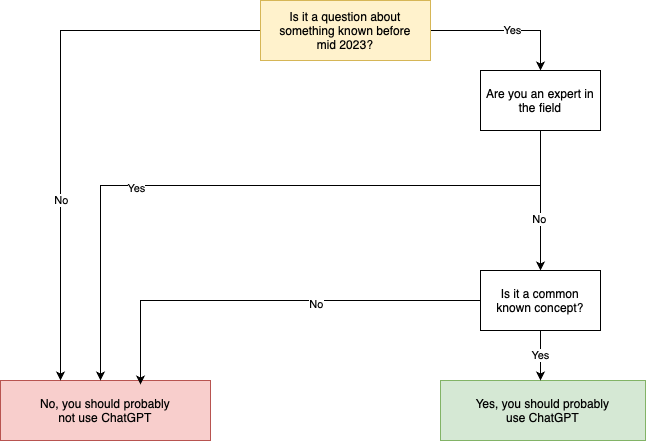ChatGPT explained for people who don't use it
This guide will provide a short and concise introduction to adapt ChatGPT in your day to day life. After reading this guide you'll program like Alan Turing and cook like Gordon Ramsey 65% time.
First we will walk over what different models provide, then go into prompting and lastly show creative use cases.
Understand Different AI Models and Their Strengths.
OpenAI: o1 or o1-mini:
Best for cognitive, hard, complex, and difficult problems.
OpenAI: 4o:
Ideal for smart and quick answers.
Claude.ai by Anthropic:
Suited for human-sounding responses and programming tasks.
Gemini (from Google):
Excellent for handling very long texts (imagine 1500 pages).
Example: Feeding it all the Harry Potter books and asking, "Who killed Snape?"
Paid vs. Free Versions
OpenAI has better paid models (o1 / o1-mini).
Top mistakes:
Using your native language instead of English (English is usually 20% smarter )
Asking for real time events (Knowledge stops mid 2023)
Not opening a new chat window (Too much text text and wrong answer will confuse the model)
Treating it like a human and not like it will try to predict the next best sentence
Effective Prompting Techniques:
Provide Clear Context in which the model will predict the next sentence:
Set the scene to guide the model. If you are using it for research don’t ask it hey do great research for me. Instead pretend you are already in the context of published papers.
Example: "I'm a Stanford professor. My student submitted this paper. Please correct it according to APA standards."
Use Examples (Few-Shot Prompting):
Provide a few input-output examples before your actual request.
Example:
Input: "I'm walking down the street."
Output: Same sentence rewritten like Shakespeare.
Repeat with more examples, then present your final input.
Use Widely Known Concepts:
Stick to well-known English terms for better results.
Less common languages may lack sufficient context.
Style Interpolation:
The model uses numbers to understand words. Therefore it often can interpolate between concepts.
Combine styles or concepts for creative outputs.
Example 1: “Write a rap song as if you are the son of Notorious B.I.G. and Tupac.”
Example 2: “What is the Berghain of Mexico City”
What do use ChatGPT for:
Creative Uses
Explore or plan travel holidays with concepts (e.g., find the "Trader Joes of Montreal"). Answer will be sometimes outdated (knowledge only till 2023 )
Use for summarization, feedback, grammar correction, and translations for better accuracy in languages like Spanish etc.
Unusual tasks (e.g., composing MIDI notes for a melody in Ableton). For example “Hey, I’m a top producer currently using Ableton. Write me a melody for the baseline the song is in E-Major.”
Ask for cooking ideas based on a photo of your fridge contents
Feed screenshots + the error messages to fix problems on your computer (e.g., debugging)
Upload images to identify plants, interpreting medical x-rays or more
Transcribe screenshots of bank account into csv so you can paste them into Google Sheets.
Cultural and Entertainment Applications
Get movie recommendations based on favorite directors, but avoid requests for asking what’s currently running on Netflix.
Generate creative outputs like themed wedding playlists or explore hypothetical scenarios (e.g., “What if Ozzy Osbourne had a wedding, what playlist would play?”).
Use ChatGPT for tasks like identifying songs or movies when you can’t recall specific details. Which Matrix movie was with bullet time?
Brainstorming and Idea Generation
Approach ChatGPT as a tool for brainstorming, but remember it's influenced by its training to produce the least conflicting answers. So you refine vague responses by asking for pros and cons or more detailed ideas.
If repetition occurs, reset the context by opening a new window or redirecting the conversation.
Be mindful of the influence of words in prompts (e.g., saying “don’t write like Shakespeare” might still cue the Shakespearean style).
Still don’t know which model is the best? Prompt them all at the same time.


